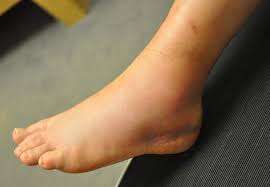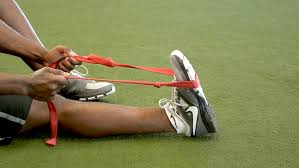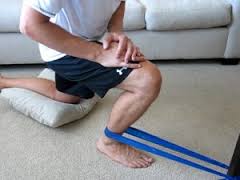 New Health Guide
New Health Guide
It is common to experience an ankle sprain because your ankle joint helps maintain your balance and is quite susceptible to sprains. A ligament in your ankle joins bones to each other, but over-stretching can cause this ligament to tear. This results in an ankle sprain. Once a sprain occurs, you may have to wait for weeks to return to your normal activities. Luckily there are homecare measures to resolve the issue as soon as possible and help you return to running.

No, running on a sprained ankle is never a good idea. Sprained ankle is more likely to occur when you run on uneven ground as your foot is likely to roll inward while running on such surfaces. Even if you have a minor sprain, you should still take a break from running because you can aggravate your injury with the weight and stretch put on the ankle. It is true that your body will do what is necessary to heal your injury, but you need to create the right environment for healing to take place. That is why it is important to give your ankle as much rest as possible and not run on a sprained ankle.
The severity of your injury usually determines the rate of your recovery, but you also need to stick to your rehabilitation plan to accelerate recovery. Here is more about the time you need to recover depending on the severity of your injury:
You get microscopic tear in the ligament fibers when you experience a grade-I sprain. There may also be mild tenderness along with swelling around your ankle. With this type of strain, you usually need to take a few days off from your regular activities. You can return to running in a few days with a brace.
You have a grade-II sprain if you have partially torn the ligament and have moderate swelling around the ankle. Your doctor will move your ankle joint to notice any abnormal looseness, which is another indication of a grade-II sprain. Running on a sprained ankle in this case is not allowed. Wait for at least 2-3 months for your ankle to recover completely from a grade-II sprain.
In this type of sprain, you have complete tear of the ligament with significant swelling around the ankle joint. There will be substantial instability when your doctor pushes or pulls on the ankle joint. It may take up to 4 months to recover from a grade–III sprain, but you have to work with a physiotherapist to make sure that your ankle heals properly.
You can start running again once you are sure that your ankle has full range of motion in all directions. Also, you need to ensure that the muscles around your ankle are now strong enough to keep you stable or else you will sustain another injury. Moreover, you should not experience any swelling or pain during or after activities like walking or standing. Be sure to confirm with your doctor before you restart running.
Running on a sprained ankle can aggravate your condition, but you can always take steps to accelerate healing and return to your running routine once again. Here are some steps to take:


Instead of running on a sprained ankle, you should perform other exercises to improve mobility in your ankle first. You can try the following movements:

It is natural to have tight calf muscles when you suffer an ankle sprain. Therefore, you should stretch these muscles to regain some flexibility.

Just like stretching, strengthening your ankle is very important. You can start these exercises once you do not notice any swelling.
With your foot flat on the ground, push it toward a wall and hold the stretch for 5-6 seconds.

Along with doing some stretching and strengthening exercises, you also need to perform certain movements that help improve your balance. You can do it simply by standing on your injured foot and lifting your good foot off of the ground. It is okay to extend to your arms out to your side to help maintain your balance.